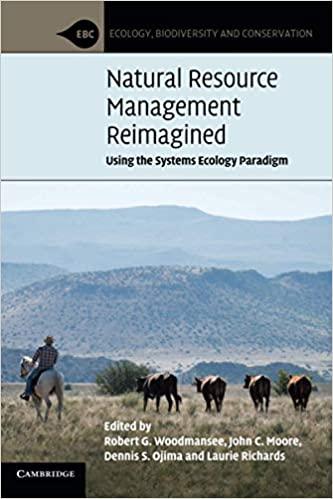Question
SECTION A [40 MARKS] Read the case study carefully and answer ALL the questions in this section. BRIEF ON THE CONSTRUCTION PLANNING OF THE BURJ
SECTION A [40 MARKS] Read the case study carefully and answer ALL the questions in this section. BRIEF ON THE CONSTRUCTION PLANNING OF THE BURJ DUBAI PROJECT, DUBAI UAE The Burj Khalifa project is a multi-use development tower with a total floor area of 460,000 square meters that includes residential, hotel, commercial, office, entertainment, shopping, leisure, and parking facilities. The Burj Khalifa is designed to be the centrepiece of the large scale Burj Khalifa Development that rises 828 meters into the air and consists of more than 160 floors. The Client of Burj Khalifa Tower, Emaar Properties, is a major developer of lifestyle real estate in the Middle East. Turner International has been designated by the owner as the Construction Manager, and Samsung Joint Venture (consisting of Samsung, Korea base contractor Besix, Belgium base contractor and Arabtec, Dubai base contractor) as the General Contractor. The design of Burj Khalifa is derived from geometries of the desert flower, which is indigenous to the region, and the patterning systems embodied in Islamic architecture. The tower massing is organized around a central core with three wings. Each wing consists of four bays. At every seventh floor, one outer bay peels away as the structure spirals into the sky. Unlike many super-high-rise buildings with deep floor plates, the Y-shape floor plans of Burj Khalifa maximize views and provide tenants with plenty of natural light. The modular Y-shaped building, with a setback at every seventh floor, was part of the original design concept that allowed Skidmore, Owings, and Merrill to win the invited design competition. The tower superstructure of Burj Khalifa is designed as an all-reinforced concrete building with high performance concrete from the foundation level to level 156 and is topped with a structural steel braced frame from level 156 to the highest point of the tower. The tower massing is also driven by wind engineering requirements to reduce dynamic wind excitation. As the tower spirals into the sky, the buildings width and shape diminish, thus reducing wind dynamic effects, movement, and acceleration. Integrating wind engineering principals and requirements into the architectural design of the tower results in a stable dynamic response, taming the powerful wind forces. Planning for the Concrete Work Prior to the construction of the tower, extensive concrete testing and quality control programs were put in place to ensure that all concrete works are done in agreement with all parties involved, including the supervision consultant (Hyder), the owner independent testing agency (IVTA), the concrete supplier (Unimix) top quality team, CTL, and Samsung Engineering and Construction Task force team. These programs started from the early development of the concrete mix design until the completion of all test and verification programs. The testing regimes included but were not limited to the following programs: Trial mix designs for all concrete types needed for the project. Mechanical properties, including compressive strength, modulus of elasticity, and split tensile strength. Durability tests which included initial surface absorption test and 30-minute absorption test. Creep and shrinkage test program for all concrete mix design. Water penetration tests and rapid chloride permeability tests. Shrinkage test program for all concrete mix designs. Pump simulation test for all concrete mix design grades up to at least 600 meters. Heat of hydration analysis and tests, which include cube analysis and tests, and full-scale heat of hydration mock tests for all the massive concrete elements that have a dimension more than 1.0 meter. These tests are needed to confirm the construction sequence of these large elements and to develop curing plans that are appropriate for the project, considering major daily and seasonal temperature fluctuations. The Burj Khalifa project demonstrates that tall building system development is always directly related to the latest developments in material technologies, structural engineering theories, wind engineering, seismic engineering, computer technologies, and construction methods. The Burj Khalifa project capitalizes on the advancements in these technologies, and in advancing the development of supertall buildings and the art of structural engineering. As of today, the Burj Khalifa is the tallest man-made structure in the world in all categories, and it has become a catalyst for further development in high-rise construction in the Middle East and throughout the world. The Burj Khalifa project is another step forward in meeting the technological challenges of future construction and it set a new stage for the future generation of supertall buildings.
QUESTION 1 1.1 As highlighted in the case study, extensive concrete testing and quality control programs were put in place. Explain the benefits of these programs for the Burj Khalifa project. Make use of relevant examples. (20 Marks) 1.2 Considering the Burj Khalifa project, critically discuss the external factors that can potentially influence the project quality deliverables. (20 Marks) SECTION B [60 MARKS] Answer ANY THREE (3) questions in this section. QUESTION 2 (20 Marks) The project manager for the Gateway Mall phase 3 expansion project has highlighted the need for the improvement in construction processes and the quality outcomes. Support how this can be successfully done using the philosophy of Dr Deming. QUESTION 3 (20 Marks) With reference to any relevant examples demonstrate the effectiveness of ISO9000 in improving project quality. QUESTION 4 (20 Marks) Using any project of your choice, advise a project manager on what quality audits entail and provide recommendations on how best these can be conducted. QUESTION 5 (20 Marks) As an experienced project quality expert critically evaluate the significance of a cause-and-effect diagram in managing quality. Make use of relevant examples. END OF PAPER
Step by Step Solution
There are 3 Steps involved in it
Step: 1

Get Instant Access to Expert-Tailored Solutions
See step-by-step solutions with expert insights and AI powered tools for academic success
Step: 2

Step: 3

Ace Your Homework with AI
Get the answers you need in no time with our AI-driven, step-by-step assistance
Get Started


